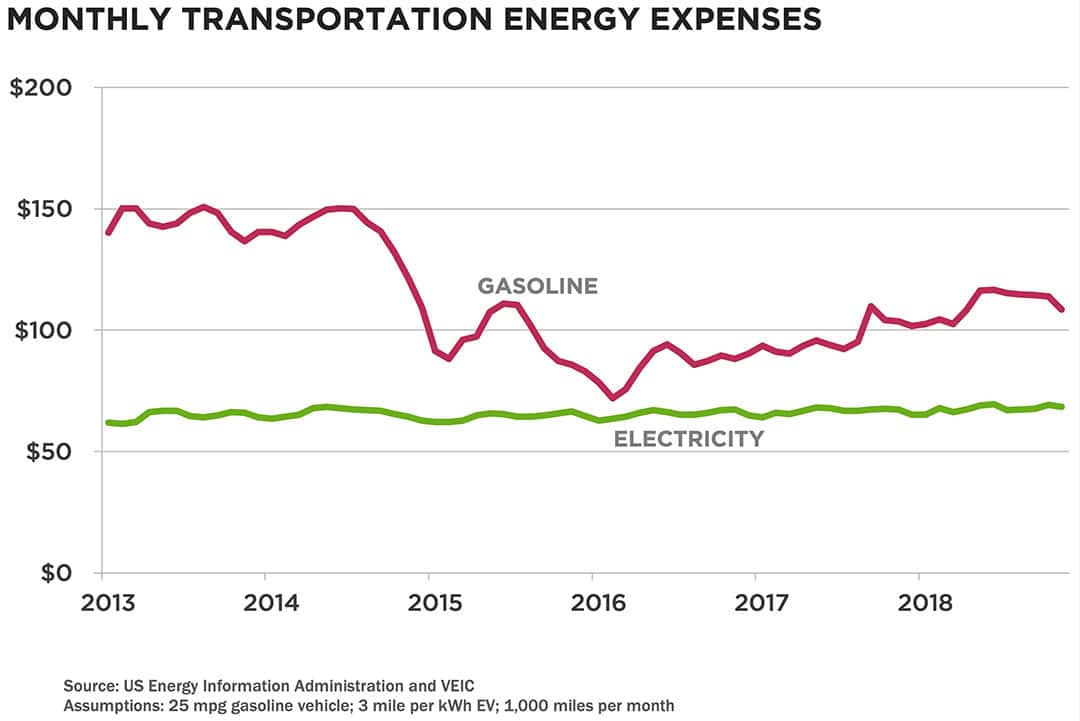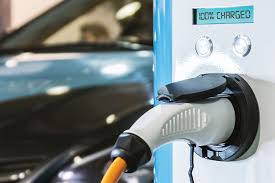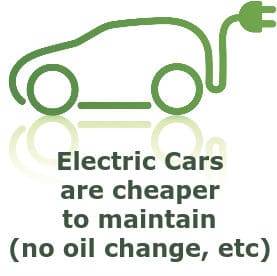To EV or not to EV?
Electric Vehicles (EVs) have come to stay. There is no doubt that alternative fuel vehicles are steadily on the rise. That also certainly is the case with Electric Vehicles. However, with the decrease in fuel costs in the US as of late, are the benefits worth the cost? Regardless of what vehicle is purchased the total cost of ownership is the major factor. In this blog, Kim Thoman, Fleetistics’ EV Expert, provides a comparison between Gasoline Vehicles (ICE for Internal Combustion Engine) vs Electric Vehicles (EV) and provides information to assist you in making an informed decision on what vehicle is right for your organization.
First, there are many factors involved in cost of ownership. These are the primary considerations.
- purchase/lease price of the vehicle
- cost to insure
- fuel – gas or electricity
- maintenance
- Battery replacement or disposal
It’s no secret that ICE vehicles are less expensive then EVs off the lot. Furthermore, you must take into consideration the many incentives offered by government agencies on EV vehicle purchases and even utility companies offering rebates on charging stations. The incentives vary by state and the commitment to EV ideology. In contrast, insurance is a factor regardless of the vehicle type. This will have to be a discussion you have with your carrier.

Cost to Power Comparisons – Electric Vehicles vs Internal Combustion Engines
Next to consider is the costs to fuel/power EVs vs. ICE vehicles. Based on a study at the University of Michigan Transportation Research Institute, the average MPG for gasoline per gallon in 2016 was 25.3. The average cost per gallon was $2.35. Using 15,000 miles as the average amount driven annually the cost for fuel for the year equates to be about $1,400.00 annually.
Likewise we look at EVs in respect to annual electricity consumed. The average cost of electricity in the US in 2016 was $0.12 per kWh. Using a baseline of 15,000 miles per year, after normalizing calculations, it costs about $540.00 per year to charge the vehicle. Finally, consider the cost of electricity throughout the US varies significantly more than gasoline. Even so, the cost over time is much more stable. The Department of Energy states charging an electric car costs about half as much as fueling an ICE vehicle. When it comes to the cost to power EV vs. ICE vehicles, EV wins hands down.
Cost to Maintain EV vs ICE
We have covered purchase price and power comparisons so let’s focus on the maintenance side. ICE vehicles require replacing parts that go bad over time. Electric motors only have one moving part while an engine in a traditional vehicle contains dozens. The ongoing maintenance with an ICE vehicle such as oil, fan belts, head gaskets, cylinder heads, spark plugs, etc. are not required to be maintained in an EV.
EVs also use regenerative braking technology that extends the life of brakes on electric cars. Needless to say, there is some necessary upkeep required with an EV such as replacing windshields, wipers, suspensions and tire rotations. Overall the cost to maintain an EV over the lifetime of the vehicle is much lower.
There are additional considerations with an EV such as charging requirements. A home charger that can provide 30 miles of range an hour costs about $600.00 but again there are rebates available. Working together as a whole to reduce transportation costs would allow utilities to allow parked EVs to deliver power to the grid and provide owners with a monetary return. This allows owners to make money from their vehicles and boost the grid’s reliability and resilience.
Another benefit from this is power onto the grid would allow more flexibility during peak demand times for less cost. The bottom line is balancing the supply and demand of electricity with EVs could result in avoiding costly upgrades.
Range Anxiety
Of course, we can’t forget about range anxiety. Range anxiety is the feeling of drivers not wanting to be stranded without access to charging facilities. This is huge in the commercial sector as typically vehicles are driving much more than 15,000 a year and many over long distances. This doesn’t mean that some vehicles can’t be transitioned into EVs or even a Plug-In Hybrid vehicle (PHEV).
Environmental Impact
On the surface, EVs appear to be more carbon-friendly, but are they really? The electricity being generated is typically being created by coal-burning power plants in the US. The raw materials, such as Cobalt, used to make the battery cells are mined from places like the Democratic Republic of the Congo.
Many countries do not practice eco-friendly mining and put nature and people at risk. Battery materials are then shipped around the world on diesel-powered ships. After a battery bank is exhausted in a vehicle, it has to be disposed of properly or yet another environmental hazard is created. So when trying to do the right thing, you have to be committed to the reasons for wanting to invest in EVs.
If you want to save money, you will likely do that. If you want to save the environment, that does not seem likely in the current energy environment. By investing in EV, you are generating demand that will ultimately drive down costs in various aspects of the supply chain and may eventually lead to a carbon reduction.
Your Bottom Line





